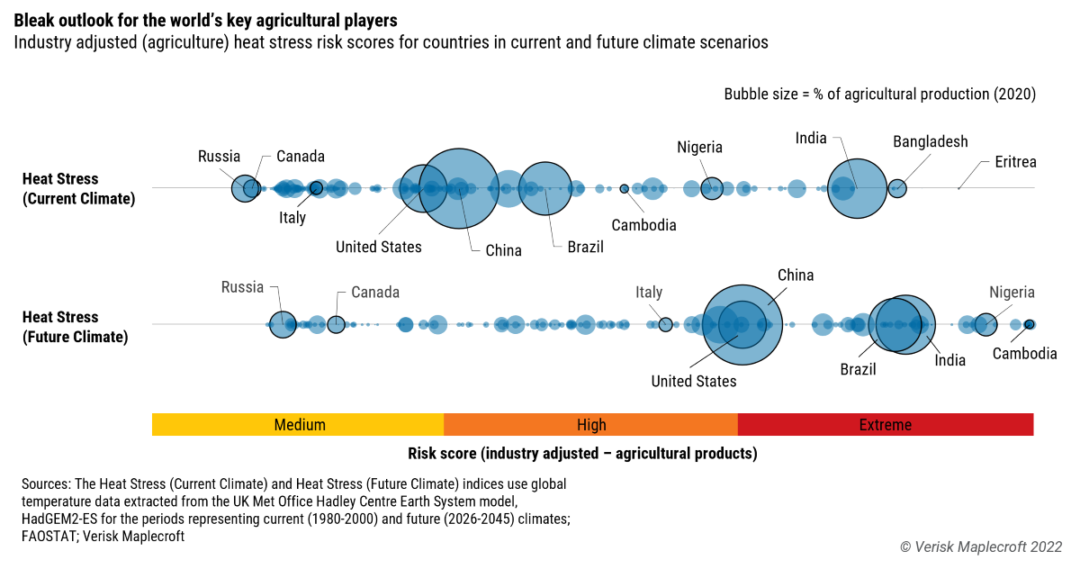
Visit Our Sponsors |
|
|
|
|
|
|
|
|
|
|
|
|
|
|
|
|
|
|
|
|
|
|
|
|
|
|
|
|
|
|
|
|
|
|
|
|
|
|
|
|
|
|
|
|
|
|
|
|
|
|
|
|
|
|
|
|
|
|
|
|
|
|
|
|
|
|
|
|

Almost three quarters of the world’s current food production will face extreme risks from heat stress by 2045, jeopardizing the health of outdoor workers and threatening the world’s supply of key crops, reveals new research from risk intelligence company Verisk Maplecroft, released Sept. 8.
Within a generation, a combination of rising global temperatures and humidity will make outdoor working increasingly difficult and even life-threatening, with significant implications not only for the health of the agricultural labor force, but also for food production in major economies such as China, India, Brazil and the U.S.
Agriculture ranks highest for both current and future heat stress risks in Verisk Maplecroft’s new Industry Risk Analytics dataset, which measures 52 different risks for 198 countries across 80 industries. The data reveals that heat stress already poses an extreme risk to agriculture in 20 countries.
That number rises to 64 under future climate conditions, according to a Representative Concentration Pathway (RCP) 8.5 worst case high-emissions scenario, modelling 2°C of warming above pre-industrial levels by mid-century. RCP is a greenhouse gas concentration (not emissions) trajectory adopted by the UN Intergovernmental Panel on Climate Change.
This will affect countries that currently account for 71% of global food production, with crops such as rice, cocoa and tomatoes set to be worst affected.
RELATED CONTENT
RELATED VIDEOS
Timely, incisive articles delivered directly to your inbox.






